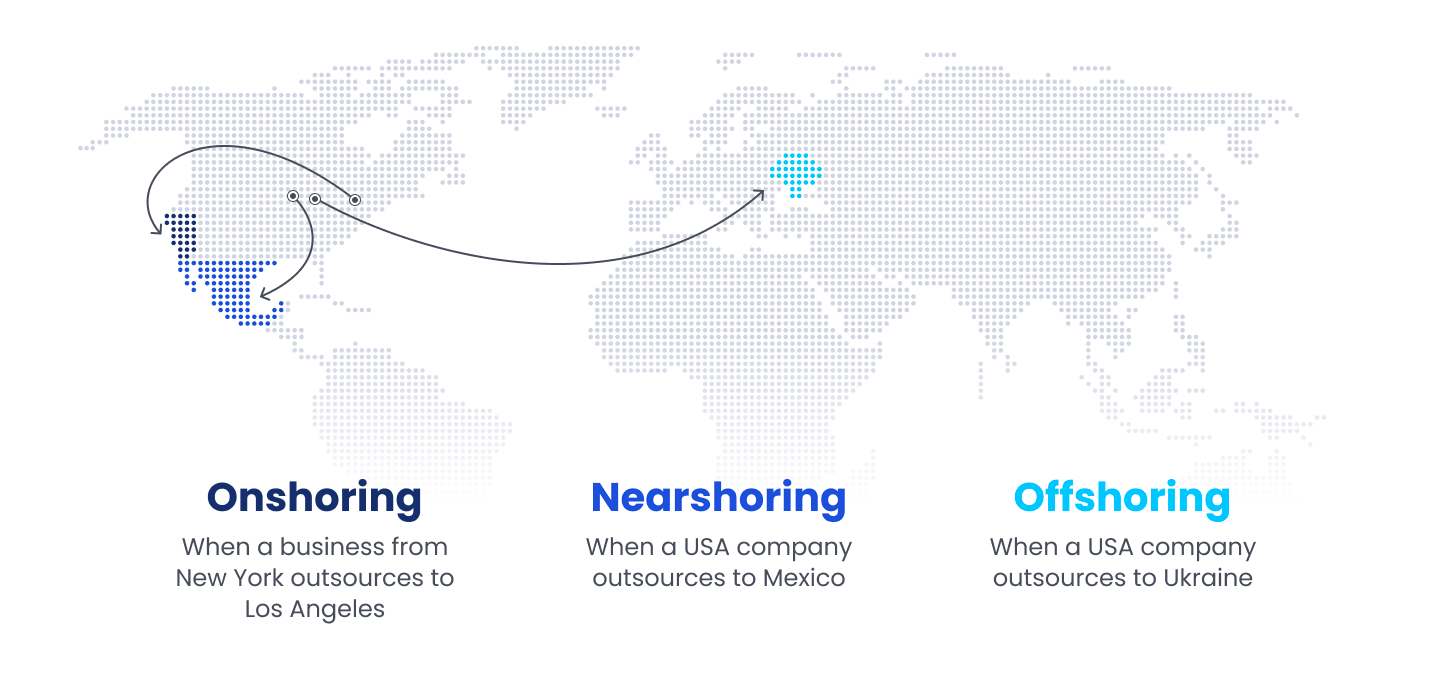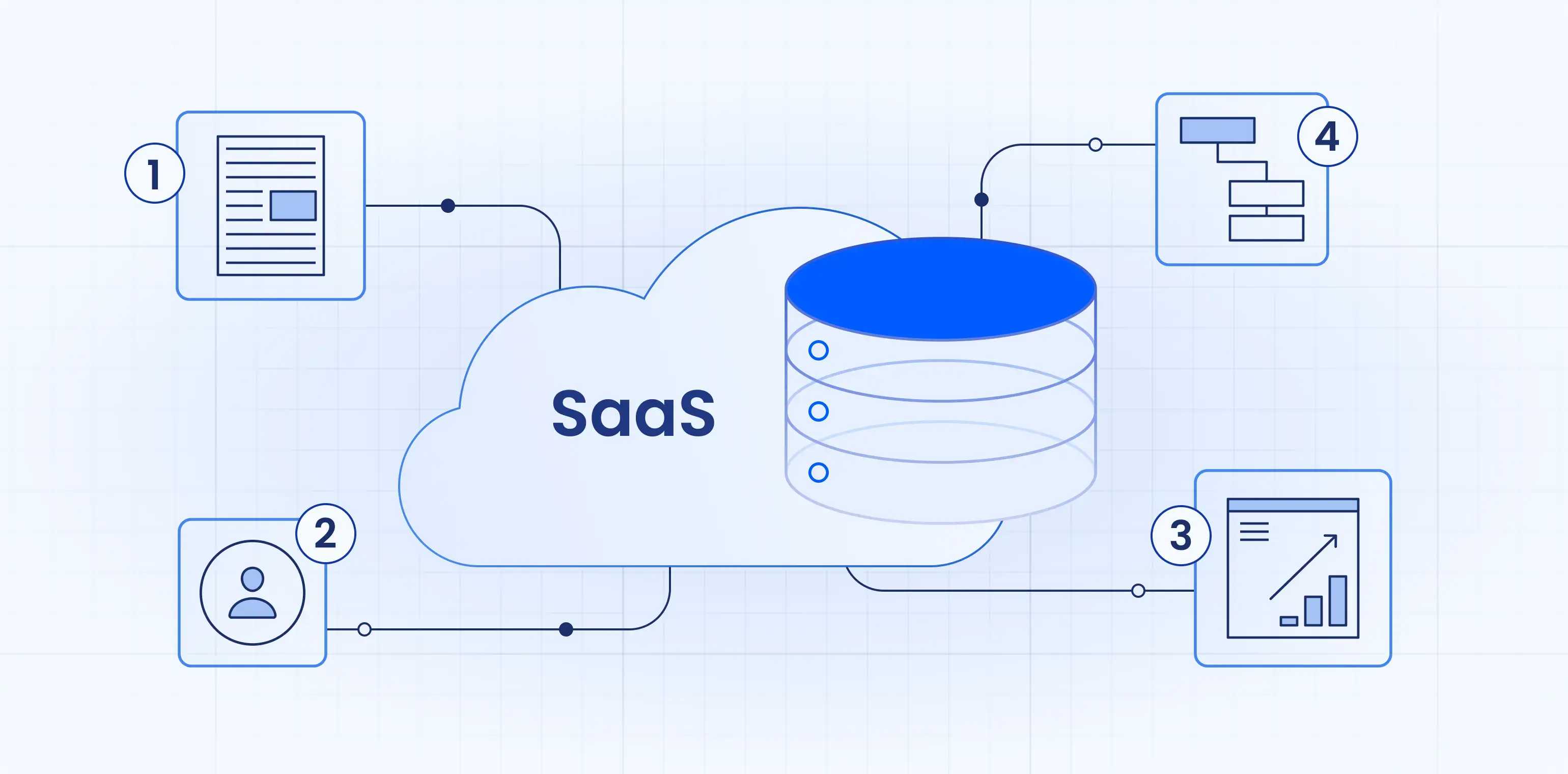Software Development Outsourcing: Full Guide for Entrepreneurs
The efficiency of businesses outsourcing their IT requirements is well-established. It is common for both small and large companies to delegate their high-tech development to specialists abroad. Outsourcing helps businesses reach their goals faster and at a lower cost. Additionally, it frees them from the risk of paying for an inferior product as the expectations for the quality of the final product are documented in the outsourcing contract.
By cooperating with outsourcing companies, clients stay up-to-date about the development flow. Contractors regularly report on their progress and inform the client about the next steps. Clients may either actively participate in the project implementation or fully entrust the remote team with the development process.
Outsourcing is a flexible cooperation model that adapts to every business’s needs. In 2022, it will be driven by extended usage of AI, blockchain, and cloud technologies. So, if you want to outsource software development in 2022, this post is an important starting point.
IT outsourcing: statistics and facts
70% of companies worldwide decide on outsourcing for economic reasons.
(Deloitte)
Outsourcing was formally identified as a business strategy in 1989. At that time, companies mostly used it to save money and reduce payroll costs. After 30+ years, this remains a key motivation for businesses. Entrepreneurs still see outsourcing as the best way to reduce costs while maintaining high product quality.
According to Deloitte, the primary reason for outsourcing is cost-cutting.
Technology and IT consulting account for 35% of professional service engagements
(Statista)
Historically, the decision on whether or not to outsource IT requirements has been influenced by both internal and external economic, technological, and security factors. However, in recent years, confidence in outsourcing has grown. Large companies like IBM, Google, and Oracle willingly cooperate with foreign contractors. In addition, companies are increasingly outsourcing their core processes to offshore teams.
36% of US workers are part of the “gig economy”.
(Gallup)
In recent years, the business community has faced a shortage of human resources, from truck drivers to Java developers. This situation created a favorable environment for the gig economy: hiring temporary workers rather than full-time employees. In this regard, IT outsourcing has become more popular worldwide.
83% of IT leaders outsource security to offshore domain experts.
(Security Magazine)
Data breaches and cyberattacks are increasing and becoming more sophisticated. Today, it is not only strategic facilities that are concerned about security. Retailers, universities, hospitals, and plants need a robust security system. However, with a lack of cybersecurity expertise, such companies prefer outsourcing security measures to third parties.
70% of the IT market value comes from outsourcing.
(Orient)
In 2022, IT is no longer a separate industry. Instead, IT is integrated with many spheres of human life, making them more technologically oriented and valuable. E-commerce, education, healthcare, automotive, logistics, and other businesses invest in IT. According to Statista, global IT industry spending is $5.3 trillion, most originating from outsourcing.

How to hire offshore developers: IT outsourcing models
IT outsourcing has developed over many years and evolved into different cooperation models. IT outsourcing models differ by location, pricing, and partnership. Clients choose a model that suits their project specifics and can revise it if business conditions change.
IT outsourcing models by location
Onshore outsourcing means partnering with remote teams in the same country. Such a model removes any cultural or language barriers. It also simplifies the legal aspect of cooperation because both parties are in the same legal environment.
Nearshore outsourcing brings together partners from neighboring countries. This model expands the geography of the talent search, reducing the problems created by different time zones and diverse views on running a business.
Offshore outsourcing opens ample business opportunities and provides access to skilled developers worldwide. It allows businesses to choose the best price-quality ratio and get a state-of-the-art product at a minimal cost.

IT outsourcing models by pricing
Fixed price calculates a final project cost before the development starts. It is suitable for small to mid-sized projects when the whole work scope is known in advance. Clients love this model as they pay after the product is received.
Time and material charges clients according to the number of hours worked. Not to go over budget, we recommend ordering a discovery phase. It provides clients with the min-max range of hours needed for project implementation to know what price to expect.
Dedicated team acts as a part of your in-house personnel but works remotely. The outsourcing company allocates a team that works only on your project. You pay salaries to team members plus an outsourcing agency fee.
IT outsourcing models by partnership
Staff augmentation involves internal team expansion at the expense of offshore developers. For example, you may have product and sales managers in-house but outsource coding, testing, and customer support. In this case, you constantly communicate with the remote team and manage the workflow.
Managed team means that the client and outsourcing provider share the team management responsibilities. Unlike an augmented team, which works more like an extension to in-house personnel, a managed team is an entity having its own autonomous frameworks and management.
Project-based team is formed for a specific project. In this case, the team management is concentrated in the hands of an outsourcing company. The client only provides product requirements and waits for the final result.
Legal considerations for IT outsourcing: software development contract
The documented rights and duties of the client and outsourced team lead to transparent cooperation. Before entering into the partnership, study the contract offered by the service provider. For better confidence, consult with a lawyer. Only sign and start development after all points are clarified.
Important points for your attention in a software development contract are:
Services to be provided. The contract must describe the full scope of work and the criteria by which the work is considered completed. Also, it should provide an algorithm for making changes to the project. A good practice is to document all workflow changes and describe how they will affect the implementation time and cost.
Development time and cost. This section should describe your price undertakings depending on the chosen outsourcing model. If you’ve chosen a fixed price, the contract should show the total amount to pay. With time and material, it would display the hourly rate. And with a dedicated team, it would indicate the monthly salary of each team member plus the service provider fee.
Acceptance testing. The work quality should be confirmed by acceptance testing. Where will it be performed? On your side or the side of a service provider? How long will it take? How will the testing results be provided? The software development contract must answer the above questions.
Intellectual property rights. Make sure the contract clearly states that all intellectual property rights belong to you as the client. Source code, wireframes, design concept – all this must be given to you after the project is completed or if the contract is terminated.
Confidentiality. Indicate what data you consider confidential and what consequences will ensue for a particular violation. Also, specify the non-disclosure period and clarify whether the service provider can share the information that they developed the project at your request.
Do you want to outsource software development?
IT outsourcing is an easy way to access skilled developers and quickly launch your project. With a variety of models, any company – from startup to enterprise – can use it to implement the product from scratch or create a certain functionality. Additionally, tools for remote collaboration erase any geographical boundaries. Companies gain access to an unlimited talent pool and can implement a project at a more affordable price.
If you have a fresh project idea and are looking for a team to bring it to life, feel free to get in touch. Our managers will explain the various stages of software development and provide you with a detailed project estimate in a timely manner.














